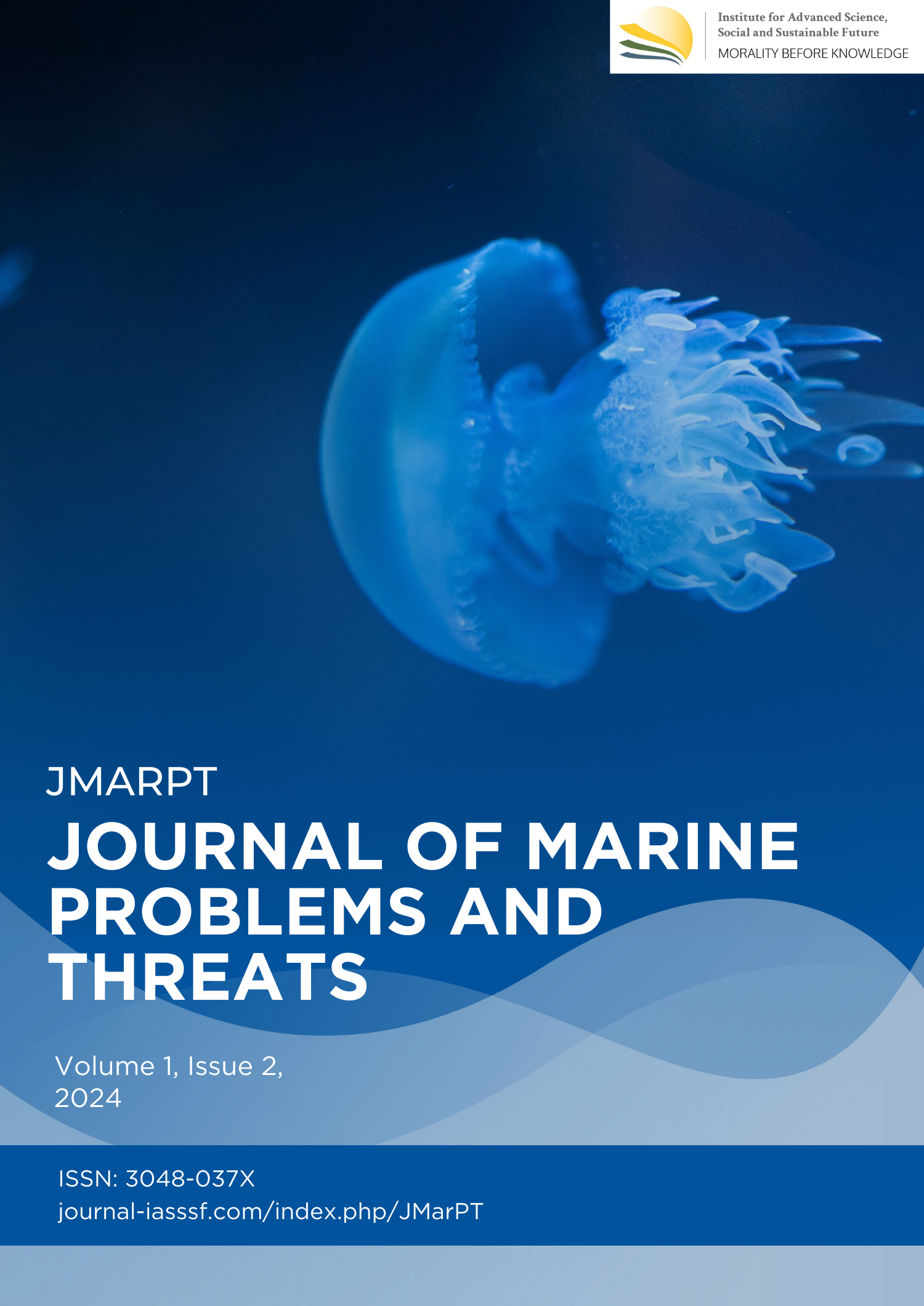Identification of potential violations using marine spatial data as an intelligence product in Jakarta Bay waters
DOI:
https://doi.org/10.61511/jmarpt.v1i2.2024.1670Keywords:
marine spatial, Jakarta gulf waters, navigation safety, maritime securityAbstract
Background: The utilization of marine spatial data based on nautical charts, both paper charts and digital maps (ENC-Electronic Navigational Chart), is currently not only an instrument to ensure safe navigation at sea. But more than it, marine spatial data can be used more widely for maritime security purposes. The problem of violations is also something that needs to be researched, considering that there are quite a lot of security posts around the waters of Jakarta Bay. Methods: This research uses a mix method with Delphi analysis, in order to obtain a common consensus in the use of marine spatial data to identify potential violations in the waters of Jakarta Bay. Findings: Using the concept of the physical basis of the state by Buzan, there is a connection between a region, natural resources and humans; Where each threat can be detected by threats to natural resource objects and man-made objects. This is also depicted on nautical map products which depict all objects (natural and artificial) on land and sea. Jakarta Bay is also a very important water area in the shipping system in Indonesia. Conclusionn: However, in the period from 2015 to 2023 there are various violations in the waters of Jakarta Bay, such as sand dredging without permission, marine pollution due to waste, theft of undersea cables, drug smuggling, illegal fuel ship to ship activities, pirate syndicates, smuggling of luxury goods, and theft accompanied by destruction of fish haven.
References
Buzan, B. (2009). People, states, and fear: An agenda for international security studies (ECPR Press Classics). ECPR Press.
Cleveland, H. (1982). Information as a resource. The Futurist, 16, 9–34. https://eric.ed.gov/?id=EJ271880
Fingar, T. (2011). Analysis in the U.S. intelligence community: Missions, masters, and methods. National Academies Press.
Goldman, A. I. (1999). Knowledge in a social world. Oxford University Press.
Hanita, M. (2019). Pemikiran-pemikiran stratejik intelijen. UI Publishing.
Kristiadi, J. (2005). Demokrasi dan strategi keamanan nasional yang partisipatif. Centre for Strategic and International Studies, 15–26.
Lambe, P. (2011). The unacknowledged parentage of knowledge management. Journal of Knowledge Management, 15(2), 97–175. https://doi.org/10.1108/13673271111119646
Mangold, P. (1990). National security and international relations. Routledge.
Marimin. (2004). Teknik dan aplikasi pengambilan keputusan kriteria majemuk. Grasindo.
Miles, M. B., & Huberman, M. (1992). Analisis data kualitatif. Penerbit Universitas Indonesia.
Nozick, R. (1989). What is wisdom and why do philosophers love it so? Touchstone Press.
Nurhidayat. (2023). Menata ruang laut dengan peta laut Indonesia. Penerbit Buku Kompas.
Rahman, C. (2009). Concept of maritime security. Centre for Strategic Studies.
Rowley, J. E. (2007). The wisdom hierarchy: Representations of the DIKW hierarchy. Journal of Information Science, 33(2), 80–163. https://doi.org/10.1177/0165551506070706
Ryan, B. J. (2015). Security spheres: A phenomenology of maritime spatial practices. Security Dialogue, 46(6), 568–584. https://doi.org/10.1177/0967010615598049
Saronto. (2020). Teori intelijen dan pembangunan jaringan. Penerbit ANDI.
Downloads
Published
How to Cite
Issue
Section
License
Copyright (c) 2024 Yose Rinaldy N, Palupi Lindiasari Samputra

This work is licensed under a Creative Commons Attribution 4.0 International License.














